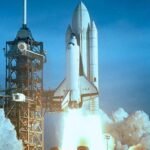Space science experiments serve as the cornerstone of our quest to unravel the universe’s secrets. This article explores the historical significance of space experiments, the evolution of scientific endeavors beyond Earth, the transformative impact of space experiments on our understanding of the universe, and the prospects that await in space science.
The Pioneering Years – Early Space Experiments
The journey of space science experiments began with the pioneering efforts of scientists and engineers during the early years of space exploration. As humanity ventured beyond Earth’s atmosphere, researchers seized the opportunity to conduct experiments that could not be replicated on our home planet.
Sputnik 1 – The Dawn of Space Exploration
Launched by the Soviet Union on October 4, 1957, Sputnik 1 marked the first artificial satellite in orbit around Earth. While primarily a technological achievement, Sputnik 1 carried instruments that provided valuable data on the density of the Earth’s upper atmosphere, laying the foundation for future space science experiments.
The Apollo Missions – Lunar Science Exploration
NASA’s Apollo missions to the Moon represented a giant leap for space science. Beyond the historic moonwalks, astronauts conducted experiments on the lunar surface, including seismic measurements, soil analysis, and the deployment of scientific instruments to unlock the secrets of our celestial neighbor.
The Era of Space Telescopes – Observing the Universe
Advancements in space technology led to the deployment of space telescopes, revolutionizing our understanding of the universe beyond the constraints of Earth’s atmosphere.
Hubble Space Telescope – Peering into Deep Space
Launched in 1990, the Hubble Space Telescope has become an iconic symbol of space science. Orbiting above Earth’s atmosphere, the Hubble Space Telescope captures stunning images of distant galaxies, nebulae, and celestial phenomena while conducting critical observations to refine our understanding of fundamental cosmic processes.
Chandra X-ray Observatory – Probing High-Energy Events
The Chandra X-ray Observatory, launched in 1999, focuses on the high-energy universe. By detecting X-rays emanating from celestial objects, Chandra has provided insights into phenomena such as black holes, supernovae, and the cosmic web, advancing our understanding of the most extreme environments in the cosmos.
Robotic Rovers – Martian Exploration and Beyond
The utilization of robotic rovers has expanded the reach of space science experiments, enabling the exploration of distant planetary bodies.
Spirit, Opportunity, Curiosity, and Perseverance – Mars Rovers
NASA’s Mars rovers, including Spirit, Opportunity, Curiosity, and Perseverance, have conducted groundbreaking experiments on the Martian surface. From analyzing soil composition to searching for signs of past life, these rovers are robotic geologists, advancing our understanding of the Red Planet’s history and potential habitability.
Voyager Probes – Interstellar Messengers
Launched in 1977, the Voyager 1 and 2 probes were initially designed for planetary exploration. However, their trajectories have taken them beyond the outer reaches of our solar system, providing valuable data on the heliosphere and interstellar space, making them true interstellar messengers.
The International Space Station (ISS) – Microgravity Laboratories
The ISS is a fantastic platform for conducting space science experiments in the microgravity environment of low Earth orbit.
Microgravity Research – Understanding Fundamental Physics
Experiments conducted aboard the ISS delve into the effects of microgravity on physical processes, biological systems, and material behavior. These studies contribute to addressing space exploration challenges and advancing medicine, materials science, and fundamental physics.
Earth Observation – Monitoring Our Home Planet
The ISS facilitates Earth observation experiments, monitors environmental changes, studies natural disasters, and collects data to enhance our understanding of climate patterns and ecological processes.
The Transformative Impact of Space Science Experiments
The data gathered from space science experiments have transformed our understanding of the universe, influencing scientific theories, technological advancements, and our perspective on the potential for life beyond Earth.
Discoveries in Astrophysics – Unveiling Cosmic Mysteries
Space telescopes and observatories have made groundbreaking discoveries, from the accelerated expansion of the universe to the existence of exoplanets in habitable zones. These findings challenge existing theories and open new avenues for exploration.
Advancements in Technology – Spin-Off Innovations
The development of technologies for space science experiments has led to numerous spin-off innovations with practical applications on Earth. These advancements include improvements in medical imaging, water purification, and communication technologies that benefit both industries and society.
Future Prospects in Space Science Experiments
As we look to the future, the horizon of space science experiments holds exciting possibilities, with plans for ambitious missions, innovative technologies, and the pursuit of explanations to some of the most profound questions about the cosmos.
James Webb Space Telescope – Unveiling the Early Universe
Scheduled for launch, the James Webb Space Telescope (JWST) is poised to be the next giant leap in space observatories. With its infrared capabilities, JWST will peer into the early universe, unveiling the formation of galaxies and providing insights into the origins of cosmic structures.
Lunar Gateway – Deep Space Exploration Hub
As part of NASA’s Artemis program, the Lunar Gateway —a space station in lunar orbit —will serve as a staging point for deep space exploration. It will host scientific experiments, enabling researchers to conduct experiments in a unique space environment before embarking on missions to Mars and beyond.
Interstellar Probes – Beyond Our Solar System
Proposed interstellar probes, equipped with advanced propulsion systems, could embark on missions to explore neighboring star systems and provide humanity’s first direct observations of exoplanets in other solar systems.
Conclusion
Space science experiments have been instrumental in reshaping our understanding of the cosmos, from the mysteries of distant galaxies to the search for life beyond our home planet. The evolution of space exploration, propelled by innovative technologies and scientific curiosity, continues to unlock new frontiers and push the boundaries of our knowledge. As humanity ventures further into the cosmos, space science experiments will continue to be the guiding light, illuminating the path toward a deeper understanding of the universe and our place within it.










